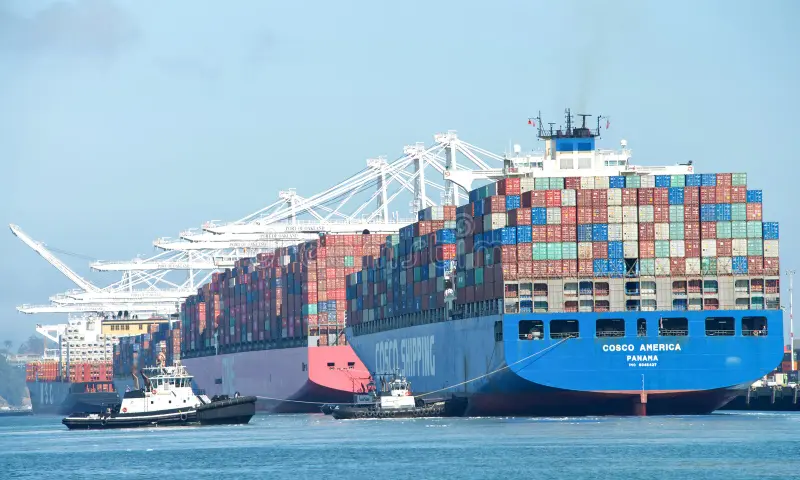By Shenzhen Guanwutong International Freight Forwarding Co., Ltd.
Indonesia’s vast archipelagic geography poses a long-standing challenge to logistics and infrastructure development. To address this, the Indonesian government launched the Sea Toll (Tol Laut) program — a strategic initiative that not only bridges regional inequality, but also fuels the rapid growth of Indonesia’s maritime and shipbuilding sectors.
As a leading China-based freight forwarder, Shenzhen Guanwutong has closely followed this development and actively supports Chinese exporters and project logistics stakeholders entering the Indonesian market.
1. What Is the Sea Toll Program?
Introduced in 2015 by President Joko Widodo as part of the “Global Maritime Fulcrum” vision, the Sea Toll Program is a government-backed initiative aimed at:
- Connecting remote and underdeveloped islands via regular shipping routes
- Reducing logistics costs across the archipelago
- Ensuring price equity for basic commodities in Eastern Indonesia
- Modernizing port infrastructure and maritime connectivity
By the end of 2023, the Sea Toll network had grown to include 39 shipping routes connecting over 115 ports from Sabang to Merauke — many of which previously relied on infrequent or informal cargo delivery systems.

2. Impact on Indonesia’s Shipbuilding Sector
To support the expanding Sea Toll network, Indonesia has invested heavily in vessel construction and shipyard revitalization. The demand for locally built ships has risen sharply, with several classes of vessels commissioned:
| Ship Type | Objectif |
| Logistik Nusantara-class | Large container ships for core Sea Toll routes |
| Kendhaga Nusantara-class | Feeder vessels to service smaller ports |
| Sabuk Nusantara-class | Pioneer vessels combining cargo and passenger transport |
| Gandha Nusantara-class | Lightweight supply ships for remote delivery |
The national government has pushed state-owned companies like PT PAL Indonesia and regional shipyards to scale up production, improve shipyard productivity, and integrate modern design standards.
However, 80% of ship components still rely on imports — particularly for engines, navigation systems, and electrical equipment — creating strong demand for Chinese marine exporters and supply chain partners.
3. Economic and Trade Benefits of the Sea Toll Program
The Sea Toll initiative is not just a logistics plan — it’s a nationwide economic equalization policy. Here are some major benefits:
- Reduced commodity price gaps between western and eastern provinces
- Increased cargo volume, from just 3 TEUs in 2015 to over 31,000 TEUs by 2023
- Development of supporting infrastructure like new dry ports, customs facilities, and inland roads
- Job creation in shipbuilding, stevedoring, and regional logistics
For example, in remote regions like Maluku and Papua, shipping costs dropped by up to 30%, improving access to food, fuel, medicine, and construction materials.
4. Challenges in Implementation

Despite its success, the Sea Toll system still faces some practical challenges:
- Limited return cargo: Many eastern ports export far less than they import, leading to vessel underutilization.
- Shipyard capacity constraints: Smaller yards struggle with international quality standards and timelines.
- Heavy reliance on foreign suppliers: Engine, radar, and propulsion systems often must be imported.
- Port congestion and bottlenecks: Due to outdated handling equipment in some regions.
- Regulatory fragmentation: Import clearance and inter-agency coordination are still evolving.
5. Strategic Opportunities for Chinese Exporters & Forwarders
At Guanwutong, we believe the Sea Toll Program creates long-term trade corridors and industrial cooperation opportunities between China and Indonesia.
Our strategic logistics support includes:
- Export coordination for Chinese marine parts and equipment (e.g., engines, propellers, bridge systems)
- Project logistics for bulk or oversized shipments to shipyards or port developments
- Customs clearance & documentation assistance for complex maritime goods
- End-to-end delivery solutions including inland trucking and bonded warehouse services in Indonesia
- Support for EPC contractors and subcontractors involved in Indonesian port or shipyard projects
Our operational presence in major Chinese port cities like Shanghai, Shenzhen, and Ningbo, combined with partners across Jakarta, Surabaya, and Batam, enables us to offer real-time, tailored solutions for complex B2B shipments.
6. Future Outlook: Smart Ports, Blue Economy, and More
Looking ahead, Indonesia’s maritime vision includes:
- Developing “smart ports” with digital tracking and automation
- Establishing ship component manufacturing clusters to reduce import dependency
- Promoting a blue economy model — sustainable fisheries, marine tourism, and offshore renewable energy
- Regional collaboration with ASEAN and China through the Belt & Road Maritime Silk Route
For Chinese exporters, this means not only supplying products — but co-building ecosystems.
Conclusion: Partner with Guanwutong for China–Indonesia Maritime Growth
Indonesia’s Sea Toll program is transforming its logistics backbone — and creating a ripple effect across shipbuilding, port construction, and regional development.
At Shenzhen Guanwutong International Freight Forwarding Co, Ltd., we are proud to support these initiatives by delivering flexible, compliant, and cost-effective solutions for every stage of the maritime supply chain.
Ready to explore China–Indonesia maritime logistics?
Get in touch with us today for a tailored quote or consultation.
